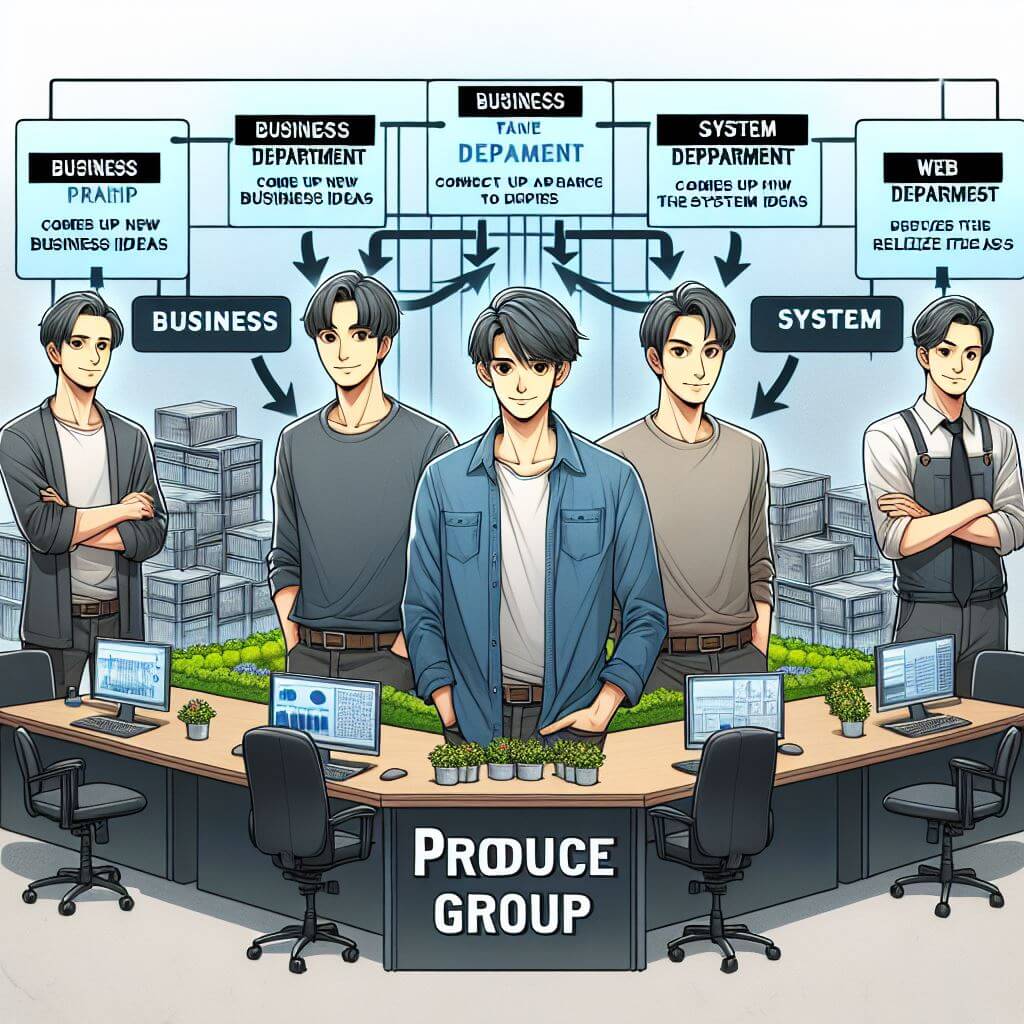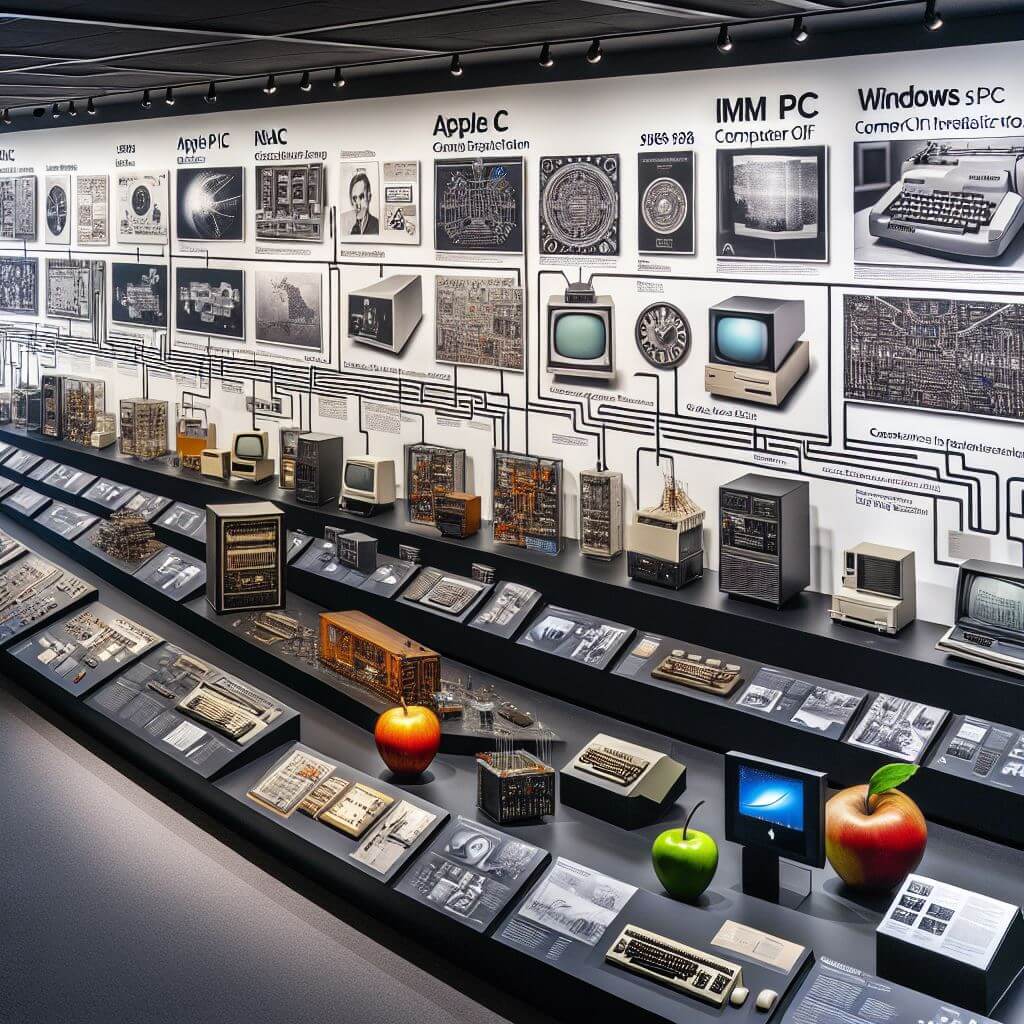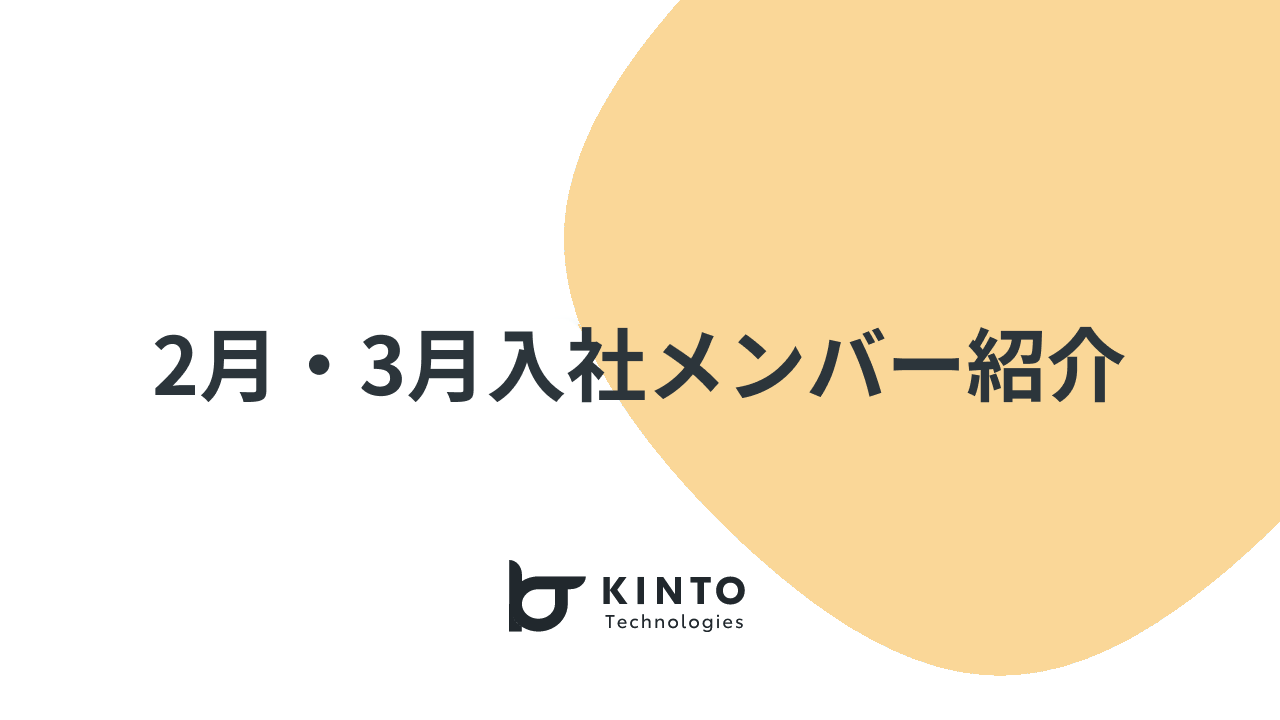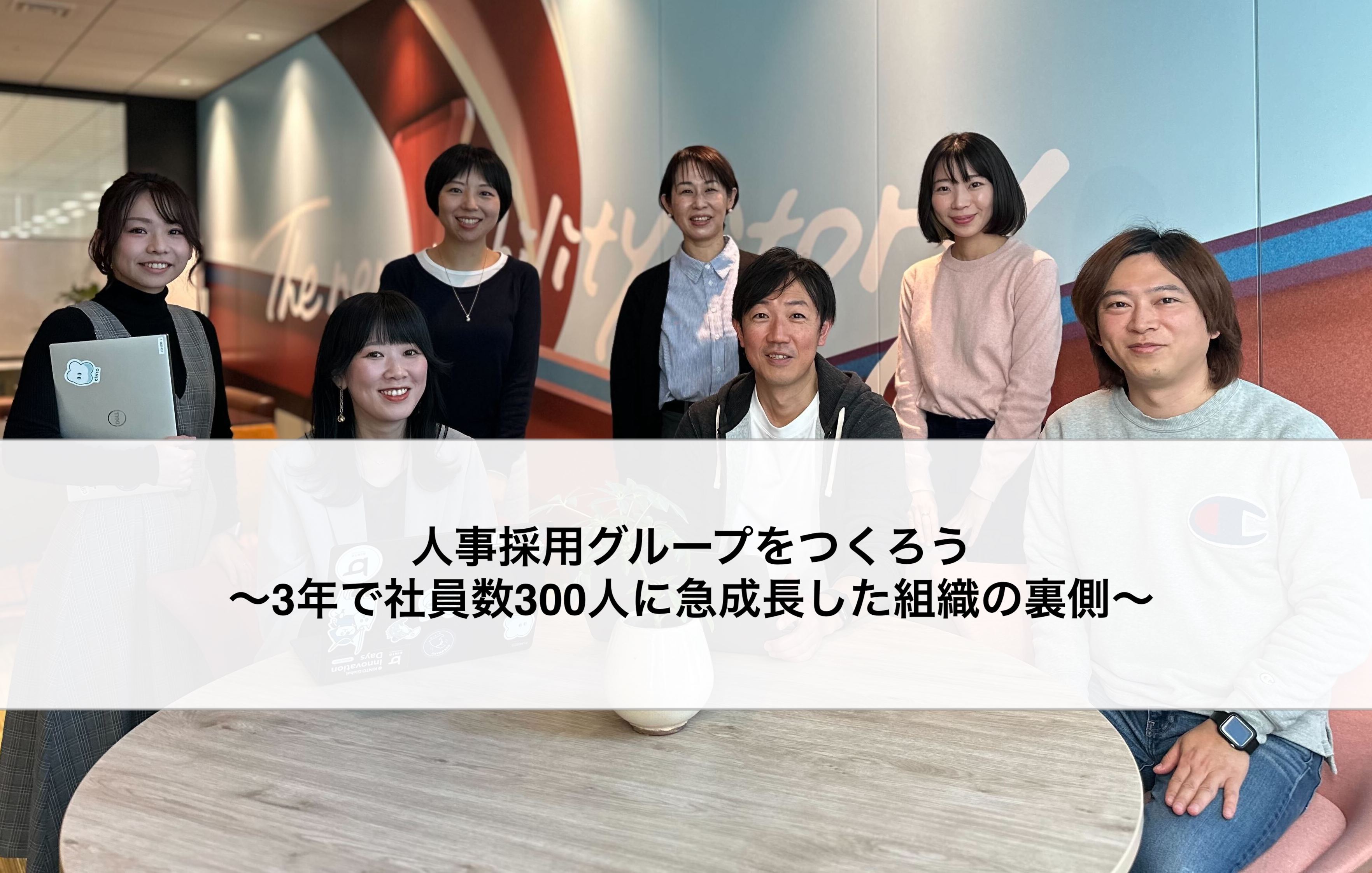40代のWeb未経験者がこんなところで何をやっているのか

はじめに
「KINTOテクノロジーズに入社するまで、Web業界は未経験だった」と言うと、えっ?という顔をされます。そんなキャリアの人が何で入社した(できた)んだろうという戸惑いの顔。しかも20代の若手じゃなくて、40代のおっさんが、何で?
異世界の歩き方
もともとは、家電の組み込みソフト開発のプログラマー。そこから車載ECUの制御ソフトを経験して、前職では欧州系の会社でエンジンなどの試験設備を導入するプロジェクトマネージャーをやってました。ソフトはあくまで全体の一部であり、機械/電気/計測/流体/シミュレーションなど、色々なものを組み合わせてシステムを構成していました。4線式3相交流の中性点接地や配管のフランジ接続に熱交の圧損とねじり振動解析やCFDみたいな世界から、クラウドのモダンアーキテクチャの世界です。
まるっきり異世界に飛び込んでから3年と少々。どんな風に歩いてきたか振り返ってみたいと思います。

40代のWeb未経験者を生成AIに描いてもらうとこんな感じ
プロGのお仕事
配属されたのは、さすがにWebシステムをゴリゴリ開発するエンジニア枠ではなくて「プロデュースグループ」への配属でした。社内では「プロG」と呼ばれています。1名が育休中なので、いま稼働しているのは4名。KINTOテクノロジーズで一番小さなグループです。
バウンダリースパナー
プロGの役割について語るとき、人と組織を繋ぐ「バウンダリースパナ―」というのが、いちばん近いと思います。KINTOのやりたいことを実現するためにどんなシステムを作るかを、ビジネス部門のメンバーと一緒に考えて、システム開発部門と繋いでいく仕事です。中でも私は、大~中規模の案件のいちばん上流工程で「システム構想検討」を主に担当しています。

ビジネスとシステムを繋ぐプロデュースグループ(なんか若い)
つくりすぎない
どんなシステムを開発するか。ビジネスニーズが満たされていることは大前提ですが、それだけでは不十分だと思います。「つくりすぎない」ことが、とても大事です。初期のシステム化要望は、あれもこれも詰め込んだリッチなものになりがちです。ビジネス部門が求める幹となる部分を理解し、本当に必要な機能を特定して、必要十分な開発スコープに落とし込んでいくように心がけています。
KINTOが手掛けるビジネスは、ほかに前例がないものが大半です。事前に頭の中であれこれ想像してシステムを作りこんだとしても、実際にそれが全て役に立つとは限りません。やってみて初めて分かることもあります。まずは必要最小限のシステムでビジネスをスモールスタートし、そこからビジネスの成長に合わせて、システムも段階的に育てていくのが良いと思います。
また、内製開発部隊はKINTOの貴重な戦力なので、そのリソースは無駄なく活用しなければなりません。案件ごとの優先度とターゲット日程に応じて効率的に割り当てる必要があります。開発スコープをコンパクトにすることで、できるだけ短期間で開発し、いちはやく市場に投入していく。そうしたスピード感はKINTOの文化であり強みだと思います。
ビジネス部門の担当者さんは、システム開発への要求出しに不慣れなことがあります。システムを利用することはあっても、なかなか立ち上げに関わる機会はないので、全く初めてというケースも珍しくありません。システムの立ち上げは、家を建てることに似ているとも言われます。どんな家にしたいか、施主さん自身も初めてでよく分からない。プロGは、そうした担当者さんをリードする役割も担っています。
内製開発部隊だからこそ、ビジネス部門と対等にやりあったり、時にはリードしたりして、絶妙な「つくりすぎない」システムを提案することができます。KINTOテクノロジーズ全体に浸透している意識だと思いますが、プロGのミッションはその中核にあると思います。
狩猟系民族
プロGは基本的に自分で獲物(案件)を見つけに行く狩猟系のスタイルです。グループミーティングで新しい大規模案件の噂が出ると皆が目を輝かせます。そして、向こうの山でマンモスを見つけたときのネアンデルタール人みたいに、いそいそと狩り支度を始めます。そうして一番最初に獲物に飛びついた勇者が、その案件の主担当になる。そういうしきたりになっています。
※実際は勤務地や得意分野を加味して担当割り振りされることもあります。
半分活かして、半分手放す
異世界を歩きはじめるときは、できるだけ身軽にしておくのが良いと思います。
経験をフル活用、しない
新しい場所で心機一転スタートするとき「これまでの経験をフル活用して」と思うかもしれません。即戦力を期待されているのだから丸腰で飛び込むのはちょっと怖い。新しい環境での不安感を支えてくれるのは、これまでの経験しかないような気がします。けど、経験や価値観を抱えたままだと重たいですし、新しいものを取り入れるスペースもありません。過去の実績はもう動かないものだから、抱えていると足に根が生えたみたいになってしまいます。私も初めての転職のとき、それで失敗したことがありました。
忘れてても、ちゃんと助けてくれる
だから、半分は手放します。こだわりとかスタイルみたいなものは真っ先に手放してしまいます。半分活かして、半分手放すくらいがちょうどよいバランスではないでしょうか。手放すのは「失う/否定する」ではなく、いったん「置いておく/忘れる」ということ。普段は忘れていても、必要な時にスッと引き出しが開いてちゃんと助けてくれる。誰かが盗んでいくわけではないのだから、ずっと両手に抱え続けることはない。そう考えるとラクになるので、そうしています。

自分の経験のストックを仕分けする
<活かしているもの>
プロマネの気持ち
私くらいの世代だと「うさぎって寂しいと死んじゃうんだよ」というのがありましたが、同じくらいプロマネも孤独に弱い生き物です。前職ではひたすらプロマネをやってまして、うまくいってるプロジェクトは良いのですが、うまくいかないと加速度的に孤立化が進むのを知っています。メンバー/顧客/オーナー/上司/財務部門/営業部門/サービス部門/本国/外注先/協業先と、各方面から同時に圧迫されて、あっというまに逃げ場がなくなります(そしてトドメに家庭が…っていう人もいました)。KINTOだと皆優しい感じなのでそこまでには至らないと思いますが、それでも孤独でしんどい仕事です。応援したいと思います。
炎上するプロジェクトは、そもそものベースライン(スコープ, 日程, 完了条件)がグダグダになっているケースが大半です。プロGの自分にできることとしては、そこをちゃんと整えたうえでプロジェクトを渡していくことです。
結局なんとかなる
前職の6年間だけでも40件弱のプロジェクトを回してきました。場数だけいえば多い方だと思います。失敗して青くなったり、予算が赤になってしまったり、先行きが真っ暗になったり色々ありましたが、どのプロジェクトも結局はなんとかなりました。イメージ通りに格好よくゴールできなくて、息も絶え絶えに転がり込んだとしてもゴールはゴール。行き止まりで万事休すと思っても、必ずどこかに打開策はあるはずだという気がします。さんざん痛い目に合いながら性懲りなくそう思えるのが、自分でも不思議です。
多様性があたりまえ
色んな人と仕事をしてきました。国籍だと、ドイツ、オーストリア、フランス、スウェーデン、チェコ、イギリス、インド、スリランカ、マレーシア、タイ、インドネシア、シンガポール、台湾、韓国など(なぜか、アメリカと中国には縁がない)。職種としても、ソフト開発、機械設計、電気工事、配管工事、搬入設置工事、営業、財務、調達、倉庫、ゼネコン、消防署、自動車の設計開発、産業用ロボット、コラボしたライバル企業 などなど。プロジェクトには多様な人々が参加するのが当たり前で、違うから参加してもらう意味があるという感覚です。KINTOにも色んな職種の人や、癖のある人がいて面白いです。
<手放したもの>
プロマネは決めるのが仕事
前職の上司が「プロマネは決めるのが仕事」と言っていて、私の実感としてもその通りだと思っていました。判断ミスよりで責められることよりも、判断しないことを責められるほうがより深刻。決めないというのは「プロマネとして仕事をしていない」ということを意味していました。上司に助言を求めることはあっても、判断を委ねることは絶対にありえません。それは、運転席に座りながらハンドルを自分で操作しないのと同じこと。誰かに判断を委ねるようではプロマネとして失格で、運転席から降りるときでした。グローバル企業でしたが、どこの国のプロマネもそんな感じだったと思います。
そんな価値観で過ごしてきたので、驚きでした。KINTO/KINTOテクノロジーズのプロマネの皆さんを見ていると、自分で決めるのではなく、関係者の合意をもって決定としている。このギャップにはかなり戸惑いましたが、そのうち、これもプロジェクトマネジメントの実践としてアリなのだと理解できました。私の前職が Decision and Order の直接的なマネジメントだとすると、KINTOは Facilitate and Agreement とでも言うべき間接的なマネジメントをやってるんだなというのが今の認識です。むしろ、とても高度なことをやられているなと尊敬する気持ちです。全て自分で決めるほうがシンプルで簡単です。
とはいえ、間接的な "合意の促進" だとスピード感には欠けます。直接的な "判断と命令" も個人に委ねるリスクがあります。それぞれの良いとこどりができないものかと思います。
思い立ったら直電
仕事道具といえばガラケーでした。何か思い立ったらすぐに電話。発信も着信も多くて、1日の履歴が数十件になることも普通です。プロジェクトメンバーが全国の現場に散っているので、すぐ捕まえるには電話しかありません。夜中でも平気で電話してました。KINTOテクノロジーズだともちろんそんなことはなくて、Slackを中心にスマートなコミュニケーションが浸透しています。そんな当たり前のことに驚いていた私は、まるで過去からタイムスリップしてきた人みたいだったと思います。
とはいえ、1分の電話で片付く要件が、Slackのやり取りだと30分かかることもあるので、コミュニケーションツールの使い分けというのは必要です。皆さん実践されてると思いますが。
組み込みソフトの常識
私のルーツであり、思い入れが深いのですが、さすがにこれは手放さざるを得なかったです。Webシステムなので、リアルタイム性の要求が無い(応答速度の要求はあるけど、別物)ですし、Event-Mode-Action のステートマシンで動くわけでもない。PIDみたいな連続系の制御システムとも違う。基本的にはハードウェア非依存なので、リソース制約も限定的です。なので泣く泣く、引き出しの奥にしまい込んでいます。AWSのSQSなんかは、昔手作りしたFIFOのリングバッファを思い出して懐かしい気分になります。
それでも、この先もしかしてSDV(Software Defined Vehicle)や IoTみたいなエッジ領域と、KINTOのクラウドに接点ができたら出番が来るかも?と、少し引き出しがウズウズしています。
ざっくり適当に理解する
異世界なので、ただ歩いているだけでも未知のあれこれに出会います。
アルパカを理解する
初めてアルパカを見たとき「首の長いヒツジみたい」と思う人。「毛の白いラクダみたい」と思う人。漢字で 羊駱駝(ひつじらくだ)と書くくらいなので、どっちもアリです。その人の生まれ育ちや直観的な感じ方に素直に従うしかありません。初心でアルパカと向き合って、ゼロから理解するのは今さら無理なので。だから、自分の知ってる〇〇みたいだなと、最初はざっくり適当に理解すれば良いと思っています。

そこまで一所懸命に観察しなくても大丈夫
違うけど、だいたい同じ
違いに着目するより、同じに着目したほうが、異世界に慣れる助けになるはずです。自分も組み込みソフトやエンジン試験装置についての経験から、ざっくり適当に理解することをよくやります。ただそれは「分かったふりをする(他人を欺く)」ではなく「分かった気になる(自分の深掘りをいったん止める)」ということ。知識を実際に使って仕事をするときは「分かっていない」という事実と向き合う必要があります。逆に言えば、それまではいったん浅いところで置いといても、たぶん大丈夫ということ。
正しさよりも全体感
足元をみて丁寧にひとつずつ正しく理解するより、少しくらいの思い込みや未消化な部分があっても良いので、浅く広く全体感を把握するほうが自分には合っているみたいです。点の集合でも、眺めてるうちに隠されたストーリーを何となく感じ取ったり(星座みたいなもの?)、登りたいところへたどり着くための手がかりになったりします(ボルダリングみたいなもの?)。特にプロマネやバウンダリースパナ―みたいな役割は、そういう全体感の把握が助けになると思います。
素潜りできるところまで
全体感を眺めて読み取れるのはあくまで仮説です。「〇〇だとすると、こんな風に進められそうだ」みたいな仮説が浮かんで来たら、必要に応じて深掘りします。今からその領域のプロになる気はない(なれない)けれど、プロの人と会話できるくらいになれれば十分です。私の場合、それでだいたい仕事は進みます。素潜りの副産物としては、それまで点だった知識が繋がって、線みたいになっていくこと。そうやって少しづつ線を繋げて地図をつくっていきます。
反抗期の過ごし方
仕事に慣れてくると、だんだんと湧いてくるものがあります。
違和感とイライラ
誰でも新しい仕事に慣れるまでは謙虚で、少し臆病なくらい周囲の様子を伺いながら過ごしていくと思います。そのうち仕事に慣れてくると、だんだんと湧き出てくるものがあります。「あれ? この会社の仕事のやり方おかしくないか?」みたいな、これまでのキャリアで経験してきたやり方とのギャップから生まれる違和感です。それ自体はとても貴重な気付きで、うまくすれば何かの改善に繋がるかもしれません。けれど、私の場合だけかもしれないですが、そこにフラストレーションが伴うことがあります。なんだかイライラした気持ち。
転職後反抗期
個人的に「転職後反抗期」と呼んでいます。早ければ3ヶ月頃から始まって、2年目くらいまで続きます。3回の転職を経験しましたが、毎度必ずやってきます。違和感自体は良いとしても、イライラを周囲にまき散らすわけにはいきません。自分の場合は 1 on 1 を使って消化させてもらいました。直属の上司と、2コ上の上司と、3コ上の上司に、それぞれ話を聞いてもらいました。話を聞いてもらうためには違和感を言語化する必要があって、まずその過程で客観視するので少し冷静になれます。少し格好つけて提言っぽくまとめたくなります。そうやって率直に対話をしていくと、だんだんと違和感が消化されていきます。
- 2コ上は副社長、3コ上は社長という距離感。フラットさはKINTOテクノロジーズの魅力です。
- 違和感を整理していくと、そのいくつかは自分のミッションに落とし込めることがあります。

生成した “大人の反抗期”(1枚目と同じ人が出てきた)
おわりに
たぶん、今がいちばん積極的に新しい技術や知識に気持ちが向いているかもしれません。
昔の引き出しが開くとき
社内の色んな職種の人の話を聞くのも、社外の展示会や他の企業さんと話をするのも面白い。刺激を得て考え方を再構築するうちに、さび付いていた昔の引き出しがスッと開いて、新しいものと古いものが化学反応を起こすことがあります。ボルダリングの例えを書きましたが、ほんの少し登ると景色が変わって、次に手が届きそうだとか、思ってたのと違うから考え直そうとか、色々と分かってきます。そういう変化を素直に受け入れると、次の変化も楽しめる。逆に苦しい気持ちになる時は、たいていそこに留まろうとしているときでした。
そうやって生き延びていく
「タイガー手回し計算機を使っていた」とか「パンチカードが読める」とか。新卒で入社したころ、そうしたベテランエンジニアの方が現役で活躍されていました。「クラウドネイティブなモダンアプリケーション」も「LLMの生成AI」も、いずれ枯れた技術としてコンピューターの年表に並ぶことになります。技術は移り変わり、求められる役割も変わっていきます。そのとき何をしているか想像もつかないけれど、自分の半分をどんどん入れ替えながら、しぶとく生き延びていければ良いなと思います。

かつての最先端技術とリンゴが並ぶ
関連記事 | Related Posts

Project Promotion Group Introduction

Actually, We're Quietly Evolving! KINTO Technologies-Style In-House Creators

CIO Office HR Recruitment Team Introduction

Meet Our New Team Members: February and March 2023 Update

Let's Make a Human Resources Group: How the Organization Rapidly Gained 300 Employees in 3 Years

Getting Agile People on Board and Getting Things Rolling: Prologue
We are hiring!
【PjM】KINTO開発推進G/東京
KINTO開発部 KINTO開発推進グループについて◉KINTO開発部 :58名 - KINTOバックエンドG:17名 - KINTO開発推進G:8名★ ←こちらの配属になります - KINTOフロントエンドG:19名 - KINTOプロダクトマネジメントG:5名 - KI...
【フロントエンドエンジニア(リードクラス)】FACTORY EC開発G/東京・大阪
KINTO FACTORYについて自動車のソフトウェア、ハードウェア両面でのアップグレードを行う新サービスです。トヨタ/レクサス/GRの車をお持ちのお客様に、KINTO FACTORYを通してリフォーム、アップグレード、パーソナライズなどを提供し、購入後にも進化続ける自動車を提供するモビリティ業界における先端のサービスを提供します。
